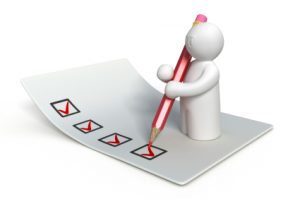 Small business tax return mistakes can vary from simple math miscalculations to huge deduction errors. While the tax preparer you hire will have liability insurance that covers his or her part in any filing mistakes, you must take several steps to correct the mistake and prevent your liability, too.
Small business tax return mistakes can vary from simple math miscalculations to huge deduction errors. While the tax preparer you hire will have liability insurance that covers his or her part in any filing mistakes, you must take several steps to correct the mistake and prevent your liability, too.
Amend Your Tax Return
The IRS knows that mistakes can happen, which is why they allow you to amend your tax return. Essentially, this amendment corrects any mistakes.
Find the X Form
To amend your tax return, you need to know the form number of your original return. Then find the X Form. For example, if you filed a Form 1040, look for the 1040-X. Likewise, Form 94X corrects employment taxes, and Forms W-2C and W-3C correct employee earnings and withdrawals.
Complete the X Form
Generally, you will need to print and complete the paper version of the X Form, even if you electronically filed your original tax return. The X Form includes three columns you must complete accurately.
- Column A – amounts from the original return
- Column B – net increase or decrease of the original amounts
- Column C – corrected amounts
Additionally, explain the changes on the back of the form. Be thorough and accurate as you share your reasons for amending your tax return.
Include Related Forms or Schedules
Your tax return amendment may also change information on the other forms and schedules you filed. Complete corrected versions of these forms and schedules, and attach them to the amended X Form. If you forget to submit all these papers together, you will experience a processing delay.
File the Amended Form
After you complete the X Form with accurate information, mail it to the IRS. It usually takes a minimum of eight to 12 weeks for the IRS to process amended small business tax returns.
Pay Penalties
While you do want to amend your tax return and correct mistakes, realize that you may also owe penalties. Interest typically accumulates from the due date of your original return. Pay any tax you owe as soon as possible to decrease penalties.
File an Amendment as Soon as Possible
You may file an amended tax return up to three years after you filed the original return. Because your fees, penalties and interest charges increase the longer you wait, file any required amendments as soon as you realize the mistake.
When you notice a mistake on your small business tax return, you may take several steps to correct it. Take these steps as soon as possible to reduce your financial liability and protect your business.

 Your commercial insurance policies protect your business, making your insurance agent an essential resource for your company. While you may not have your agent on speed dial, you will want to contact him or her in several circumstances.
Your commercial insurance policies protect your business, making your insurance agent an essential resource for your company. While you may not have your agent on speed dial, you will want to contact him or her in several circumstances. Workers’ Compensation covers medical and other expenses if you suffer an injury or illness from work-related activities. You may wonder, though, if you can file a claim if you’re injured during your commute, especially if you carpool with co-workers or run errands for your boss on the way to work. Here are some guidelines to help you answer this question.
Workers’ Compensation covers medical and other expenses if you suffer an injury or illness from work-related activities. You may wonder, though, if you can file a claim if you’re injured during your commute, especially if you carpool with co-workers or run errands for your boss on the way to work. Here are some guidelines to help you answer this question. Whether you stand all day, operate heavy machinery or handle chemicals, you need to protect your feet as you work. Several foot safety tips reduce injuries and help you maintain a safe work environment.
Whether you stand all day, operate heavy machinery or handle chemicals, you need to protect your feet as you work. Several foot safety tips reduce injuries and help you maintain a safe work environment. Across the country, temperatures plummet during cold winter months. Many employees must work outdoors and face injury or even death because of the weather conditions. Protect your outdoor workers with several safety precautions.
Across the country, temperatures plummet during cold winter months. Many employees must work outdoors and face injury or even death because of the weather conditions. Protect your outdoor workers with several safety precautions. The majority of accidents in your workplace may stem from slips, trips and falls. In fact, slips, trips and falls cause one in four reported workplace injuries, 15 percent of workplace accidental deaths and 65 percent of lost work days.
The majority of accidents in your workplace may stem from slips, trips and falls. In fact, slips, trips and falls cause one in four reported workplace injuries, 15 percent of workplace accidental deaths and 65 percent of lost work days.








